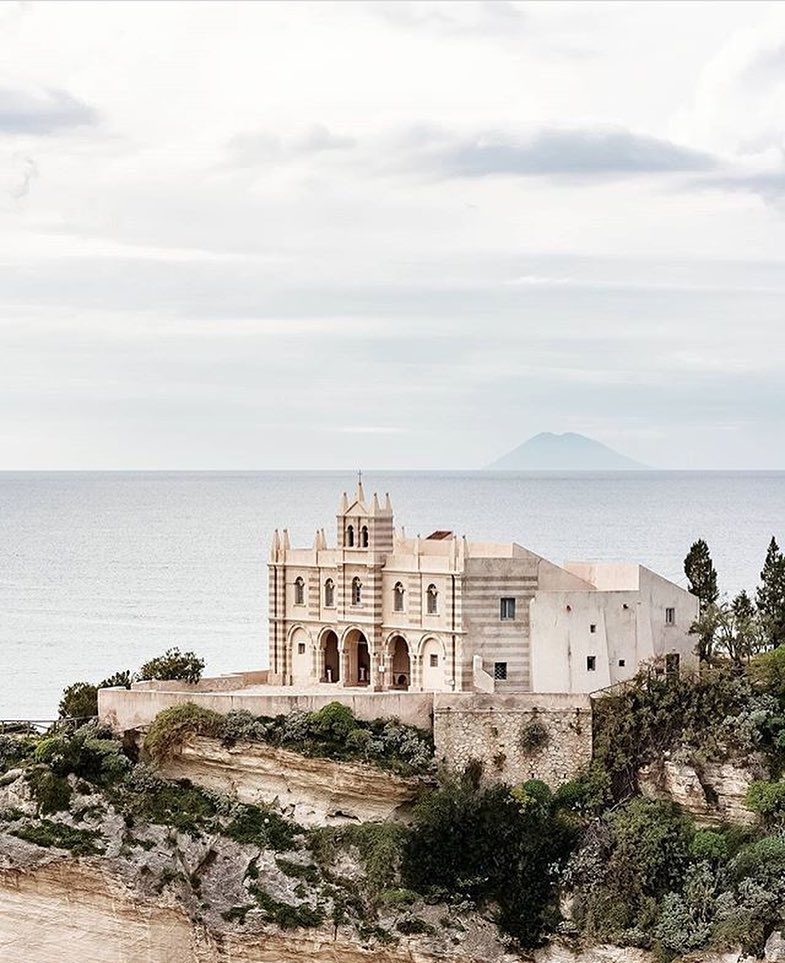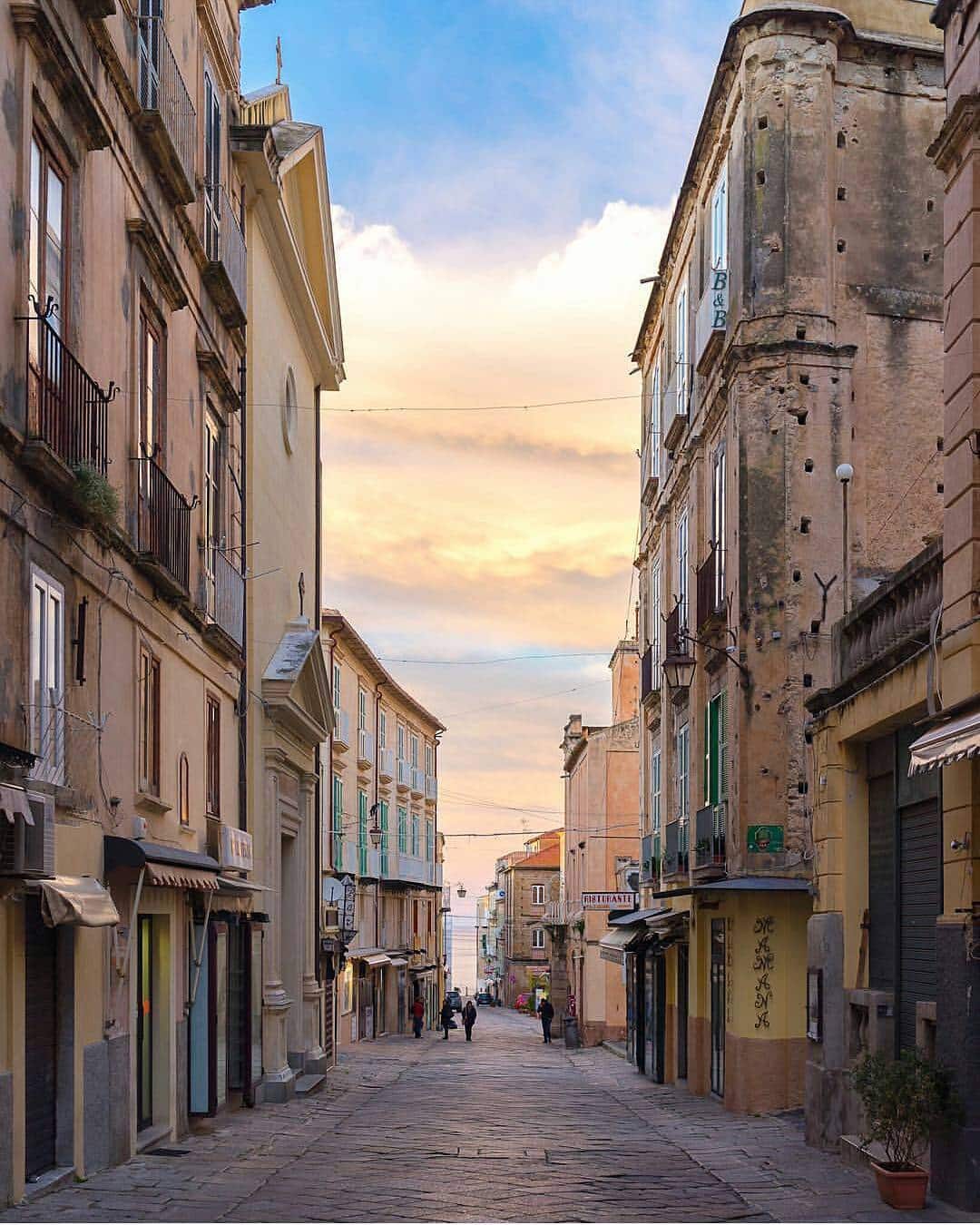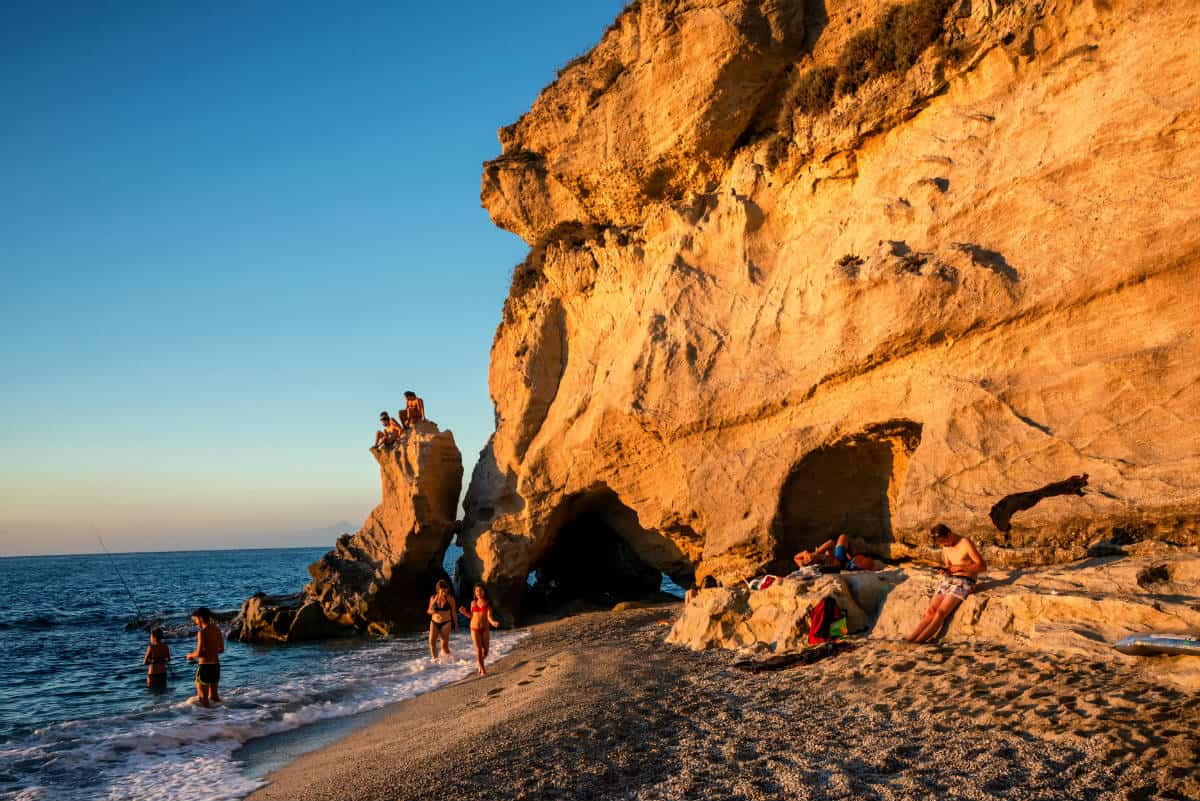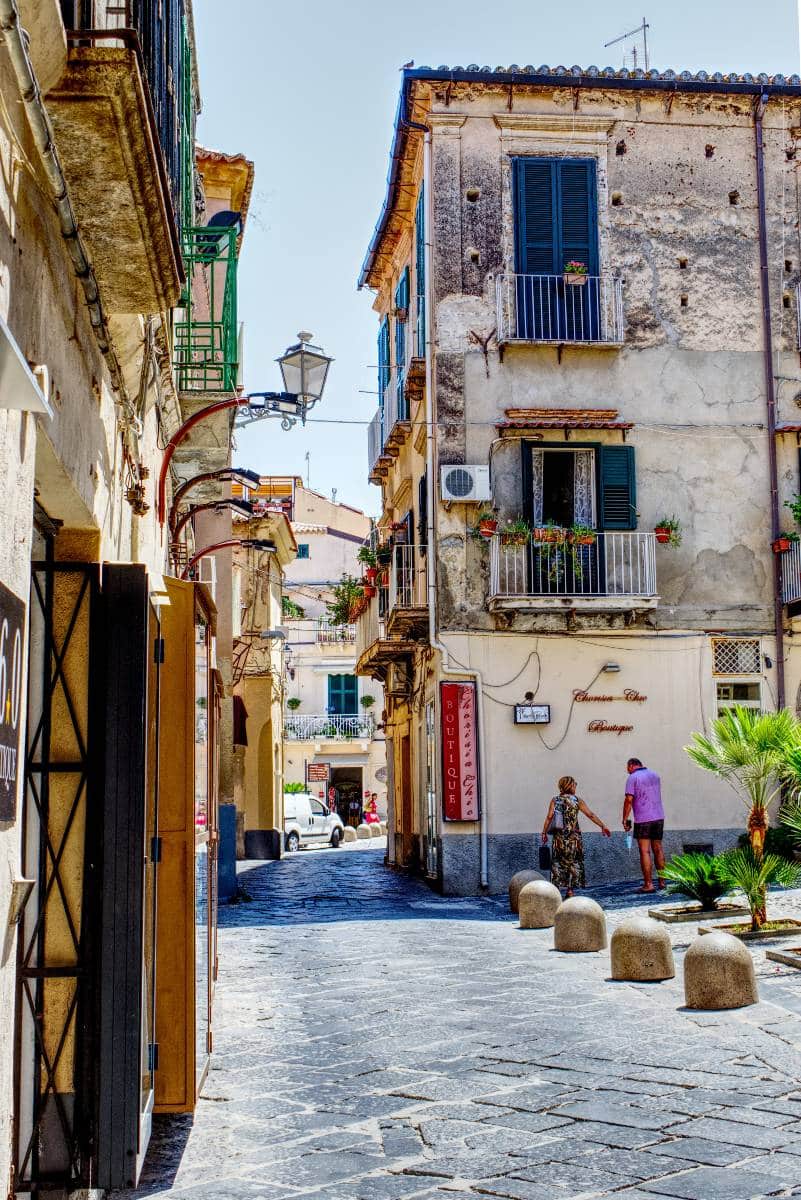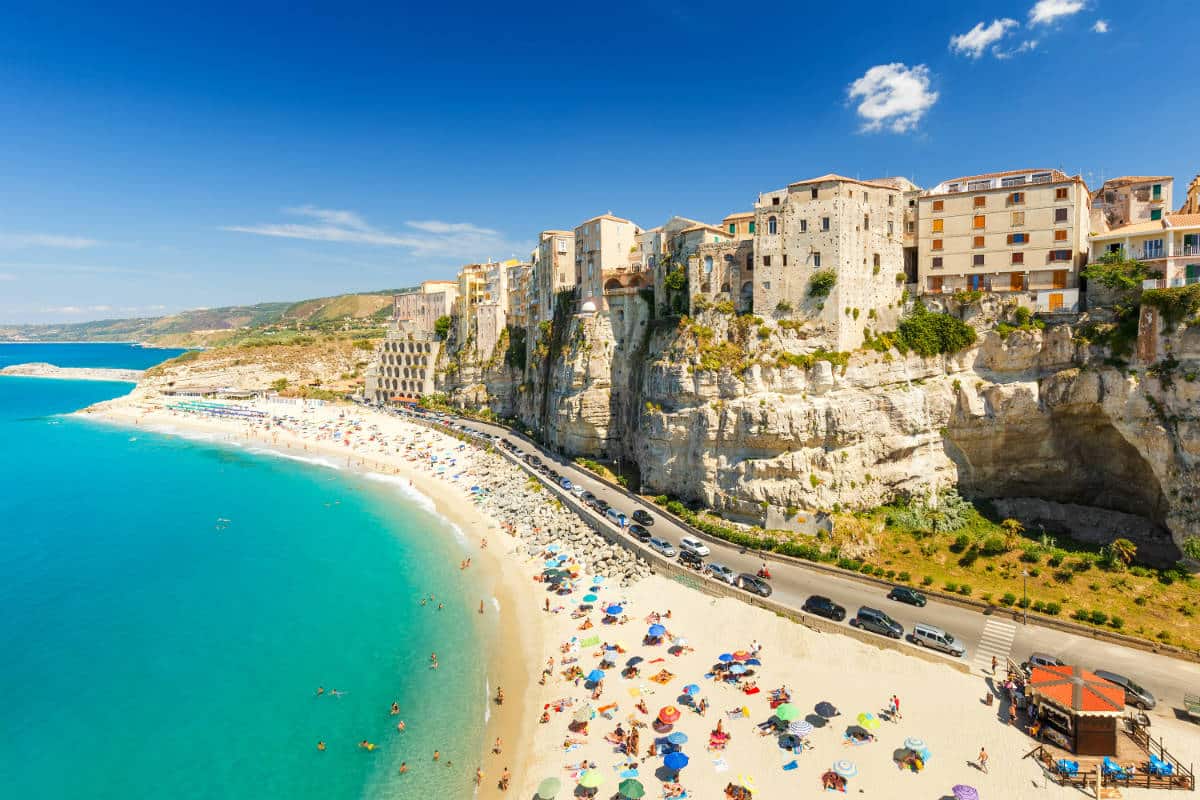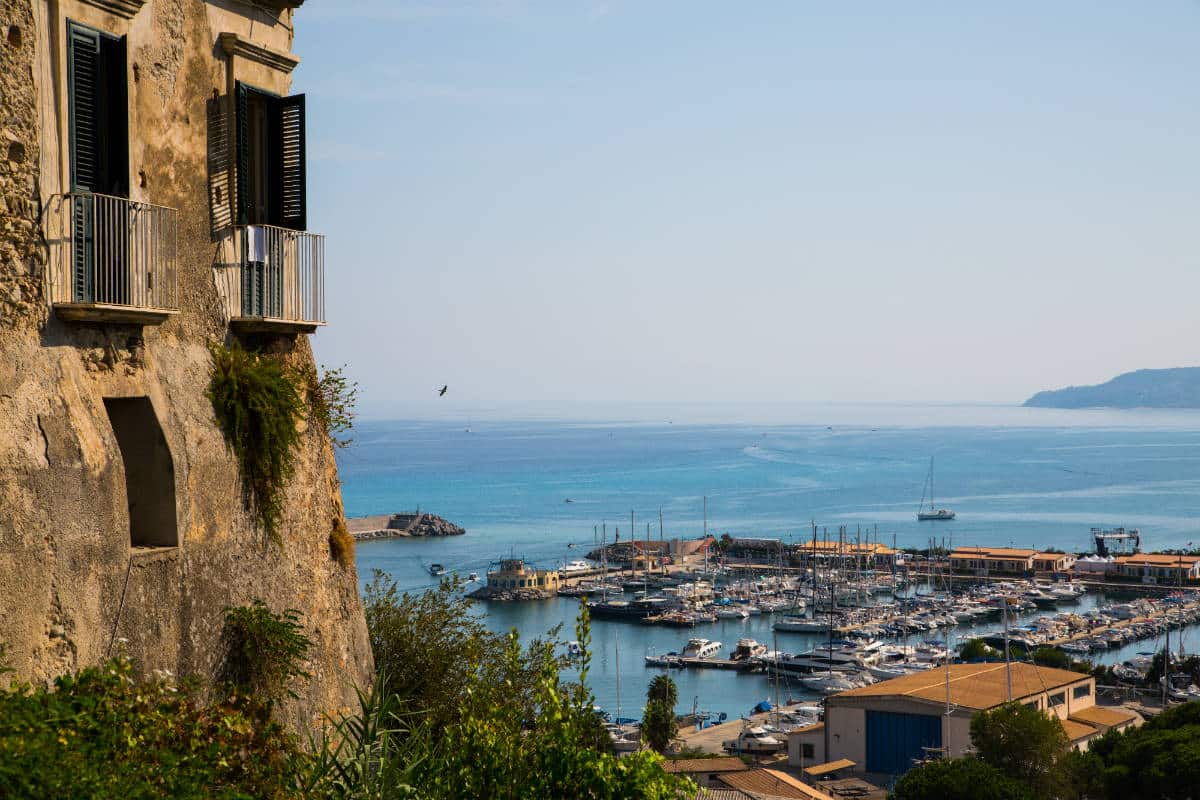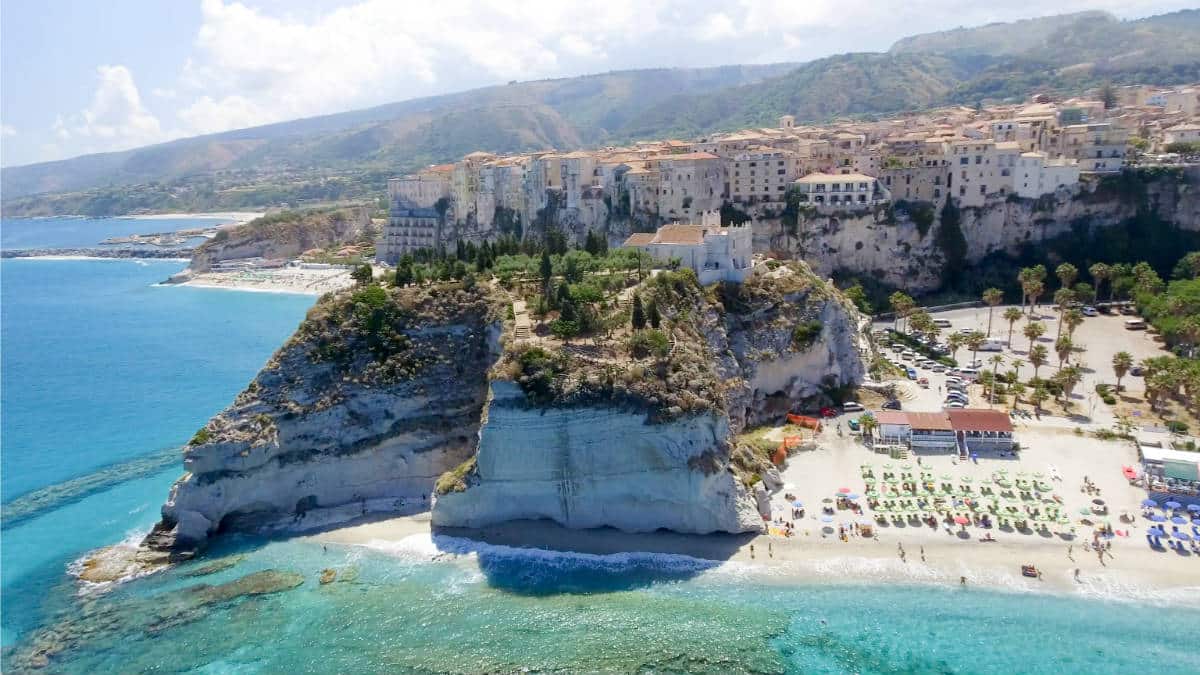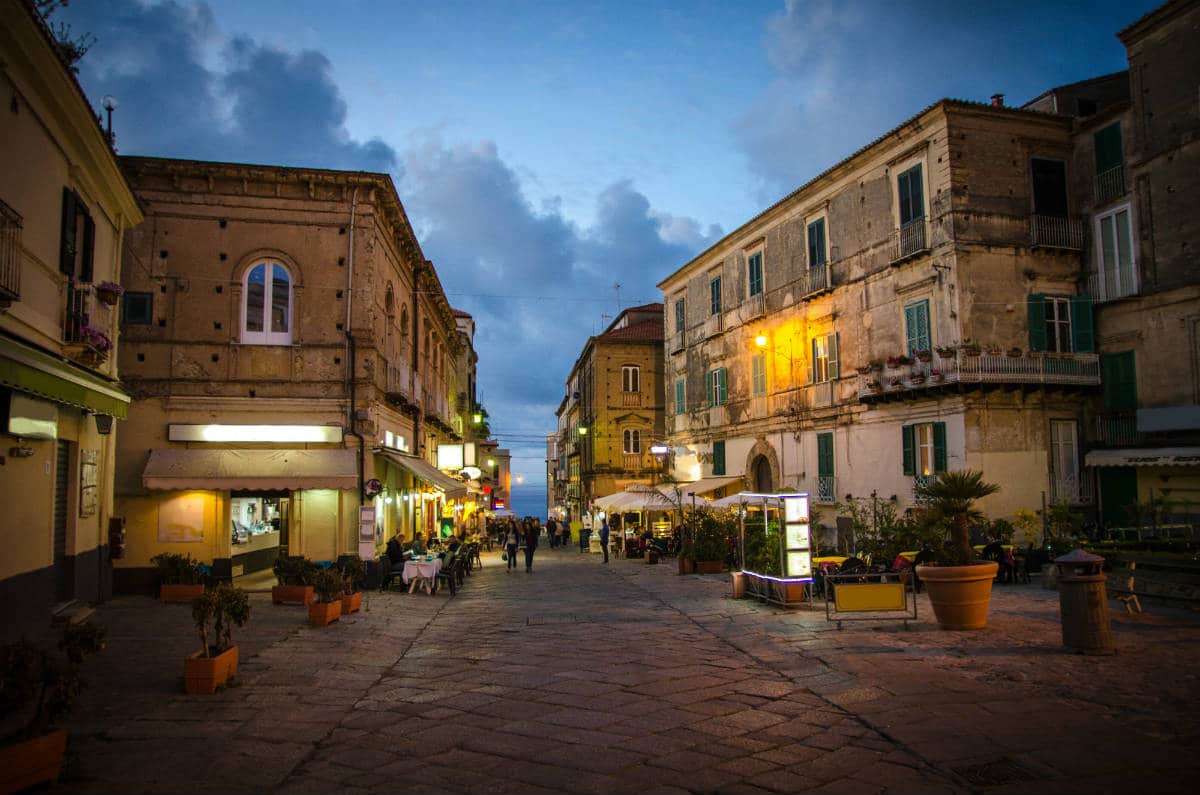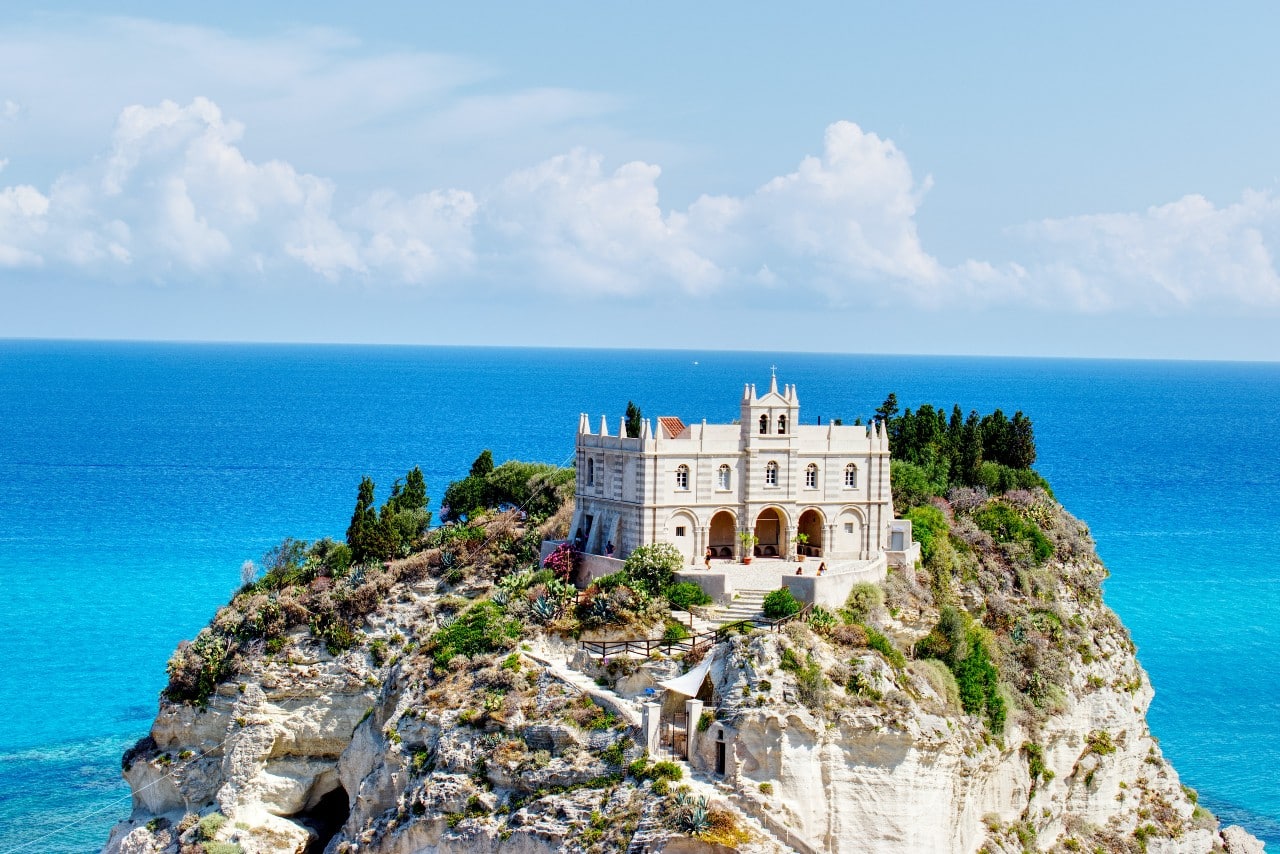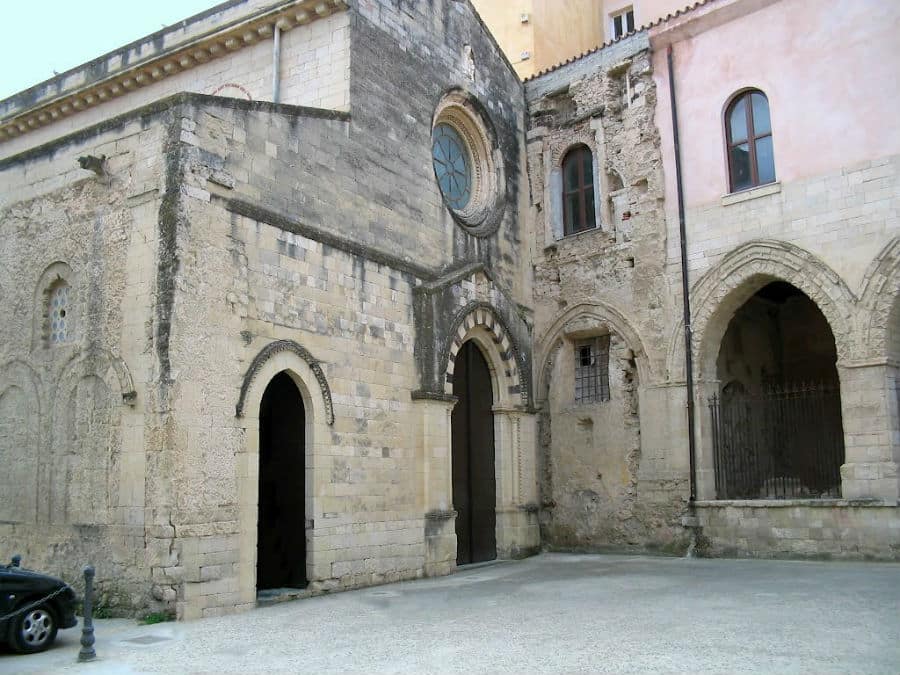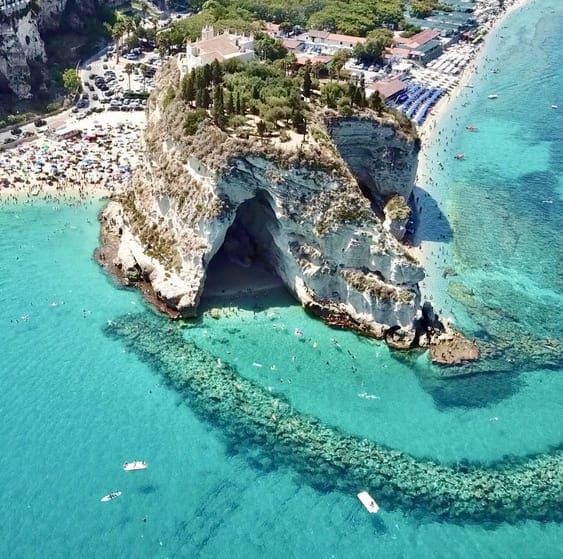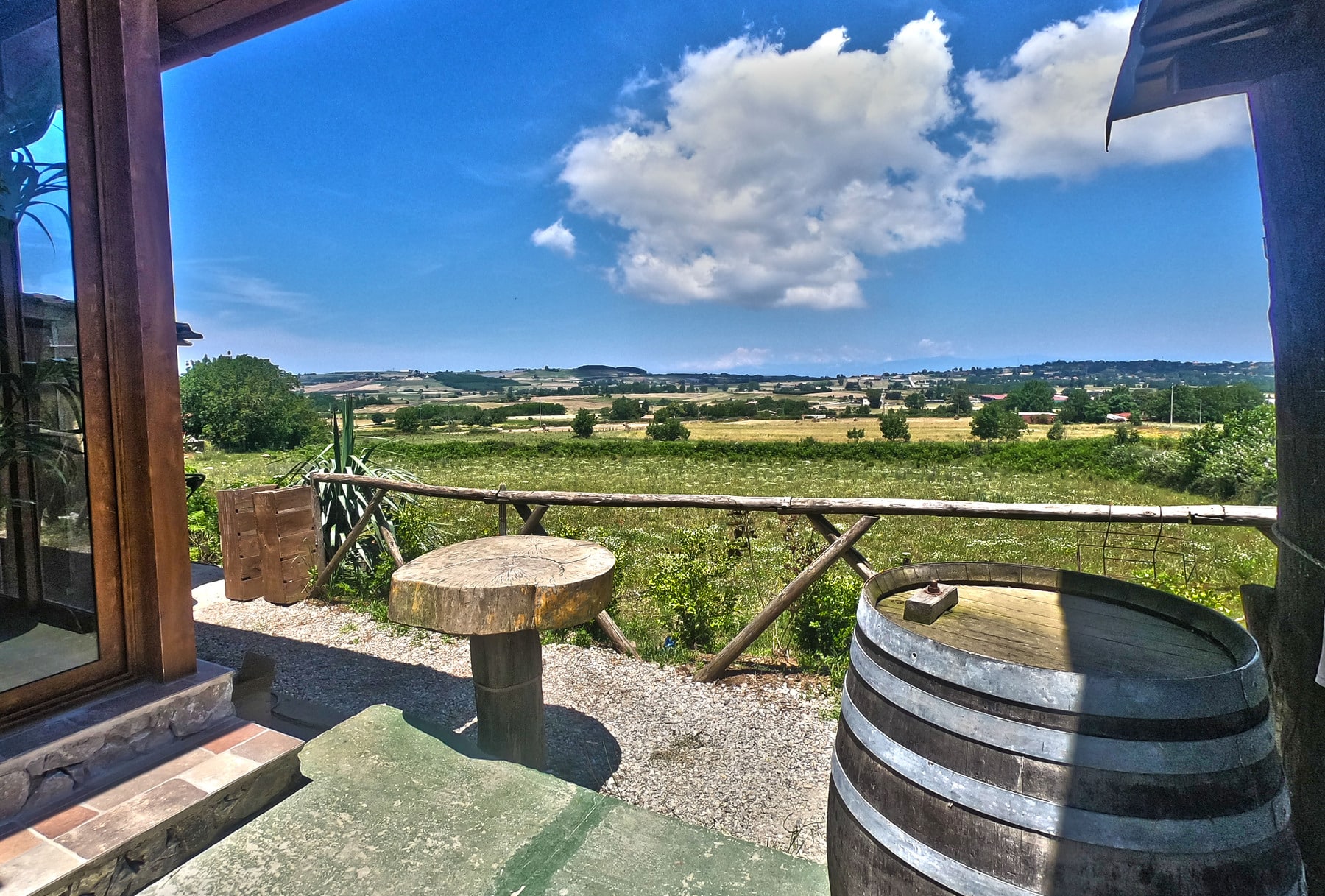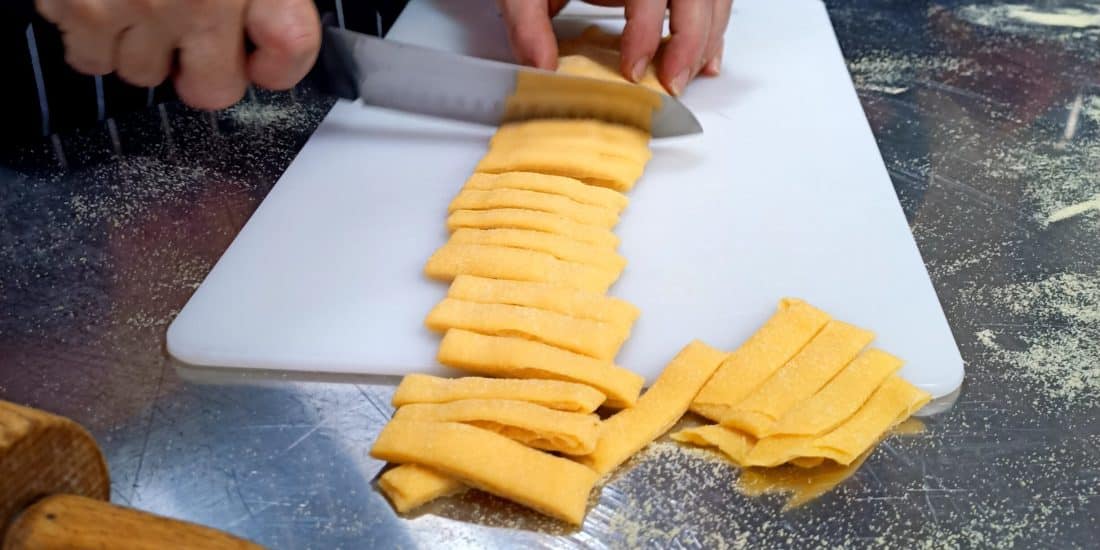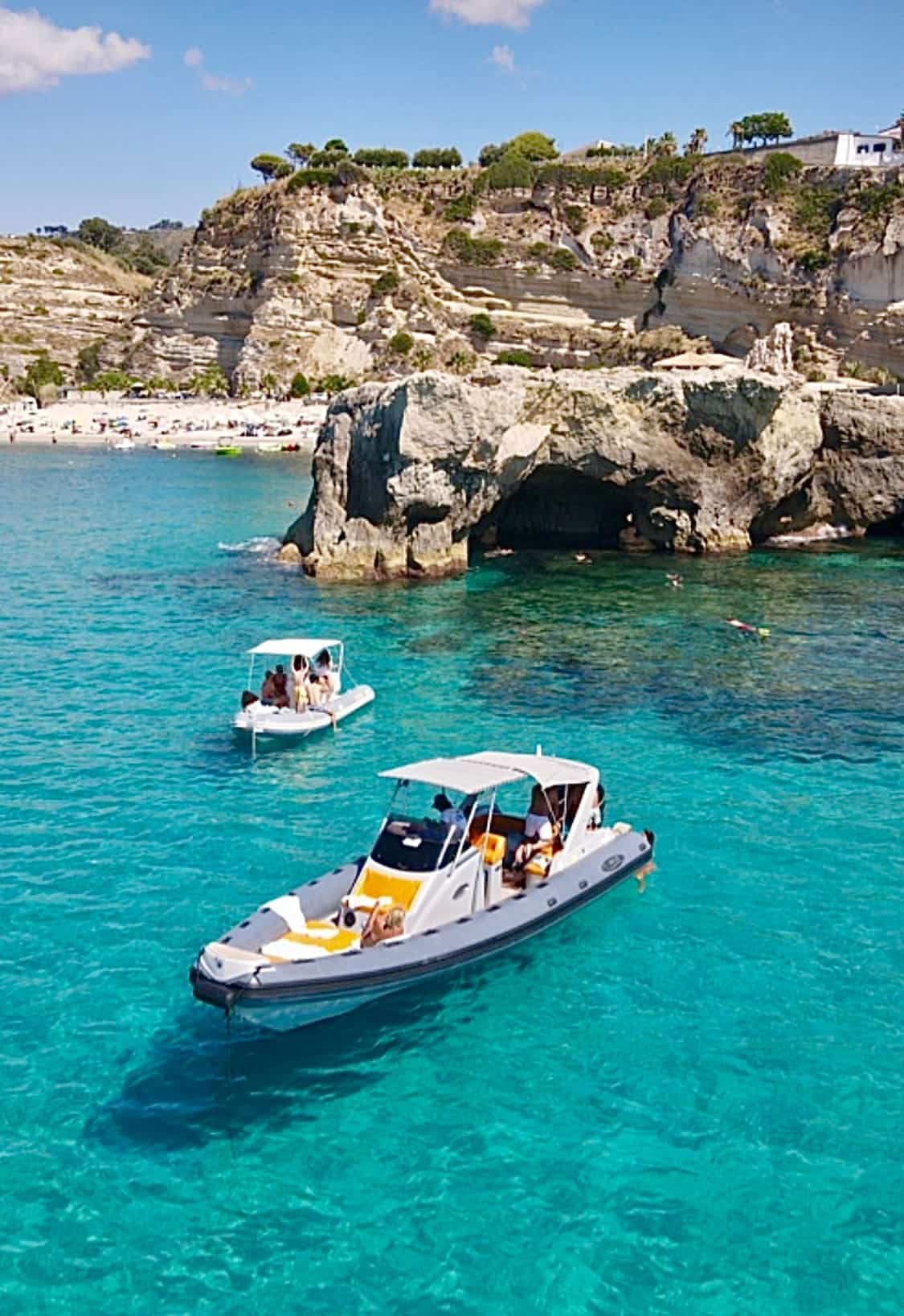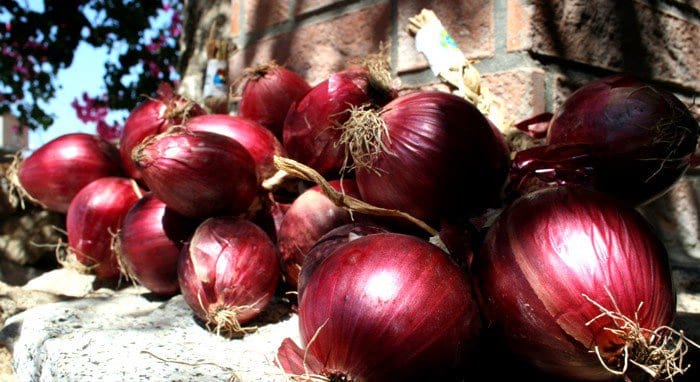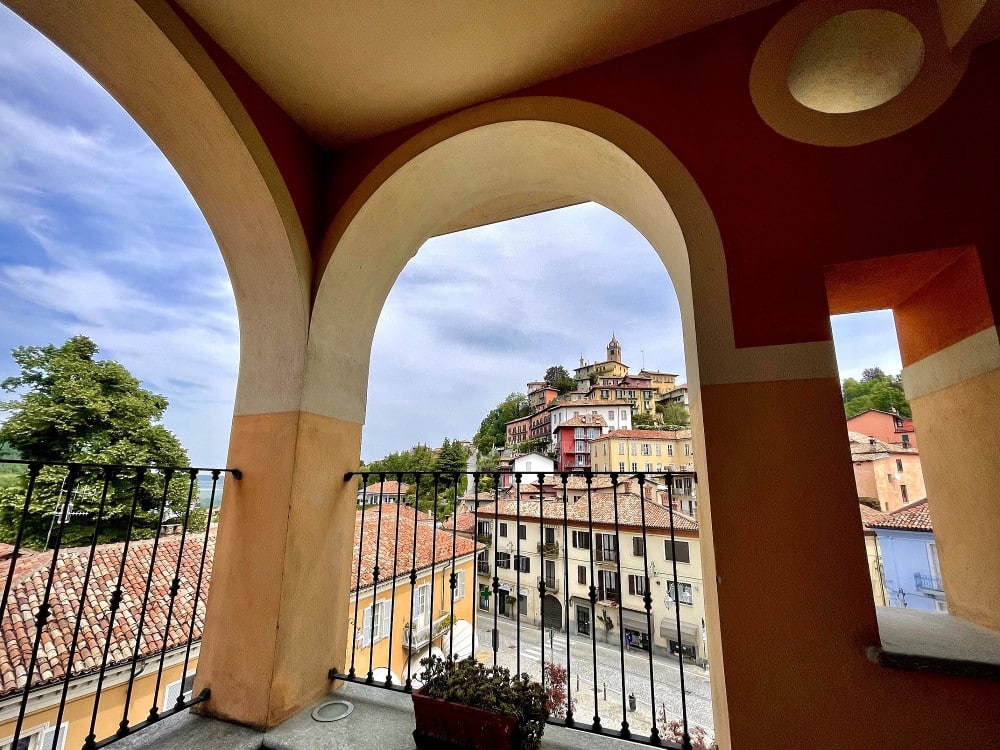The historic center of Tropea
The beating heart of Tropea is its historic center, built on a rocky promontory that rises 50-61 meters above sea level. This ancient, once fortified town is characterized by narrow, winding streets, squares overlooking the sea, and a series of elegant 18th- and 19th-century aristocratic palaces. The ancient walls, which once surrounded the town, are still visible in some areas, testifying to Tropea's defensive past. Walking through the center, it is easy to come across portals of palaces that tell the story of local noble families and cisterns dug into the rock, used to store grain from Mount Poro. The view from the historic center is simply enchanting: from here, you can admire the view of the Tyrrhenian coast and the golden beaches below.
The history and legend of Tropea
The origins of Tropea are shrouded in legend, which has it that the founder of the city was Hercules, the famous hero of Greek mythology. According to tradition, Hercules, on his return journey from the Pillars of Hercules (Spain), stopped on the coast of southern Italy and founded the city. However, the documented history of Tropea begins in Roman times, when the city was an important trading port. Sextus Pompey defeated Caesar Octavian nearby, and the Romans had built a port south of Tropea, at Formicoli, which Pliny and Strabo mention in their writings. In Byzantine times, Tropea became a strategic city, with numerous remains left by the Byzantines, including the church on the promontory and the city walls, known as the "walls of Belisarius." The city then came under the rule of the Normans, who further fortified it, and later the Aragonese, who contributed to its development.
Monuments and places of interest
One of the most recognizable symbols of Tropea is the Sanctuary of Santa Maria dell'Isola, located on a promontory jutting into the sea. Its spectacular location and the long flight of steps leading up to the church make it one of the most beautiful viewpoints in Italy. Another monument of great importance is the Cathedral of Mary Most Holy of Romania, a Romanesque building dating back to the 12th century that houses the icon of Our Lady of Romania, the city's patron saint. In addition, the Diocesan Museum, located on the premises of the Bishop's Palace, holds numerous works of art, including sculptures, frescoes, and artifacts from various periods. Another place of interest is the ancient Convent of the Pieta, founded in 1639, which played an important role in the religious life of Tropea.
Beaches and nature
Along the beautiful Costa degli Dei, Tropea's beaches are among the most beautiful in Calabria and Italy, with their crystal clear sea and golden sands. Spiaggia della Rotonda, located near the San Leonardo Rock, is considered one of the 50 most beautiful beaches in Europe. Other beaches not to be missed include Spiaggia del Cannone, Spiaggia di A Linguata, and Spiaggia di Marina dell'Isola, from which you can reach the picturesque Grotta del Palombaro. Each beach in Tropea offers a unique experience, thanks to its clear water and the spectacular landscapes that surround it.
Gastronomy and typical products
Tropea is famous for its gastronomy, particularly for the sweet Tropea red onion, a PGI product that features in many local dishes. This onion is particularly sweet compared to the white variety and is used in many typical recipes, including salads and fish dishes. Other typical products of the area include 'nduja di Spilinga, Pecorino del Poro cheese, extra virgin olive oil, and local wines. Among handicrafts, terracotta artifacts, baskets, and wicker baskets are the most popular.


